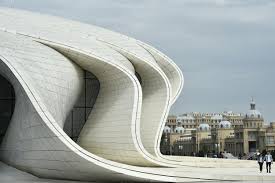Zaha Hadid
- Serene
- May 21, 2024
- 2 min read
Zaha Hadid
Iraq/England
1950-2016

Dame Zaha Hadid was a pioneering force in architecture, whose designs broke the mold of traditional forms. Born in Baghdad, Iraq, in 1950, Hadid's journey in architecture began with mathematics, which she studied as an undergraduate before pursuing architecture at the Architectural Association School of Architecture in London. Rejecting the straight lines that dominated architectural drawing, Hadid embraced painting and abstraction to push the boundaries of modernism and explore new territories in building design. Her innovative approach earned her the nickname "Queen of Curves," as she reshaped architectural geometry with her expressive and dynamic work.
Hadid's upbringing in an influential Iraqi family, with a father who was a political figure and a mother who was an artist, played a significant role in shaping her outlook. Her exposure to ancient Sumerian cities during her childhood fostered her architectural curiosity. Despite her global stature, Hadid maintained a close connection to her roots and never married or had children. After her studies, Hadid joined the Office for Metropolitan Architecture and later opened her own practice in London. Her sketches and designs, distinct from the prevailing postmodernist style, set her apart and marked the beginning of a new era in architecture. Although many of her early designs were never constructed, her radical ideas gained attention through extensive publication and exhibitions. Hadid's impact extended beyond her firm, as she shared her vision through teaching at prestigious institutions worldwide. The architecture community recognized her for her imaginative designs and her commitment to pushing the envelope of what buildings could be. She then began her career teaching architecture, first at the Architectural Association, then, over the years at Harvard Graduate School of Design, Cambridge University, the University of Chicago, the Hochschule Künste in Hamburg, the University of Illinois at Chicago, and Columbia University. She earned her early reputation with her lecturing and colorful and radical early designs and projects, which were widely published in architectural journals but remained largely unbuilt.
Hadid's vision came to life in iconic structures like the London Aquatics Centre, the Broad Art Museum, and the Guangzhou Opera House. Even after her untimely death in 2016, her legacy continued with projects like the Beijing Daxing International Airport and the Al Janoub Stadium in Qatar.
She was one of the most innovative architects of all time and a trailblazer for women in architecture, Hadid received numerous accolades, including the Pritzker Architecture Prize and the Stirling Prize. She was also honored as a Dame by the British monarchy and was the first woman to receive the Royal Gold Medal from the Royal Institute of British Architects.
`---------------------------------------------------------------
Architecture is a collaborative team effort, so in that spirit the class worked both individually and with a partner to achieve their dream projects. I see a bright future and Zaha would be proud that her legacy lives on!





































Comments